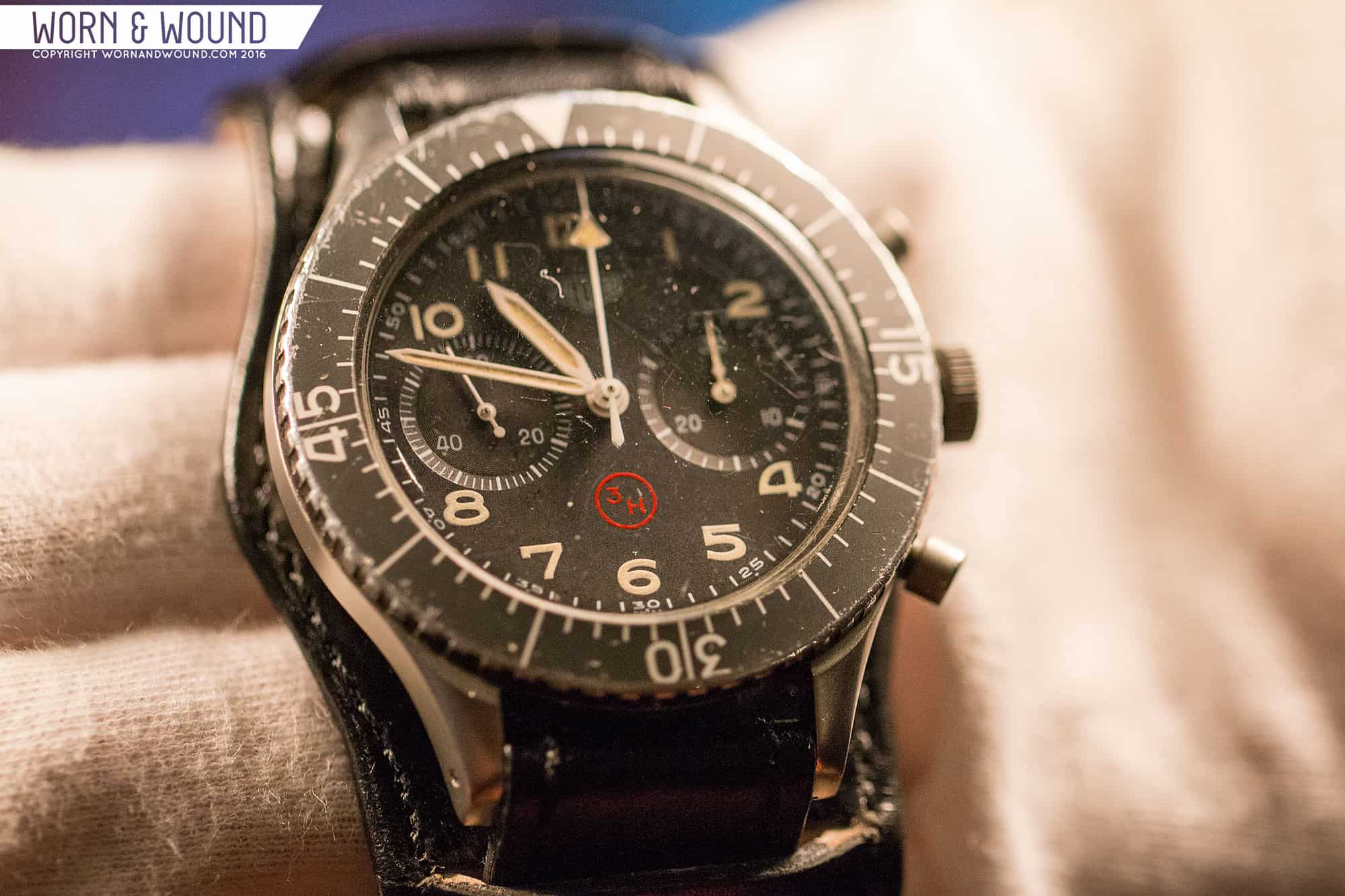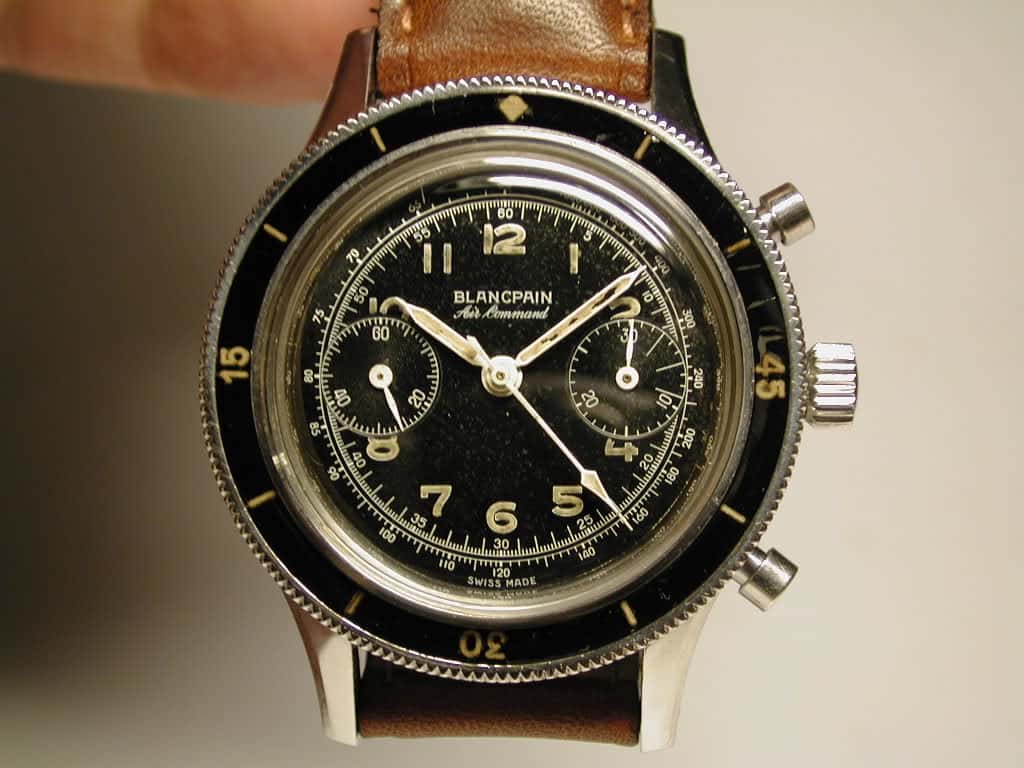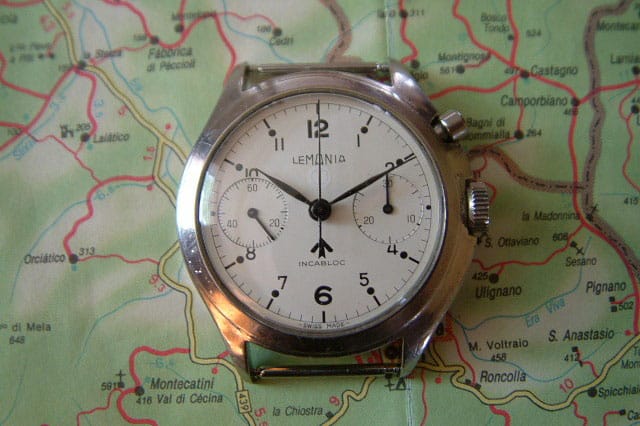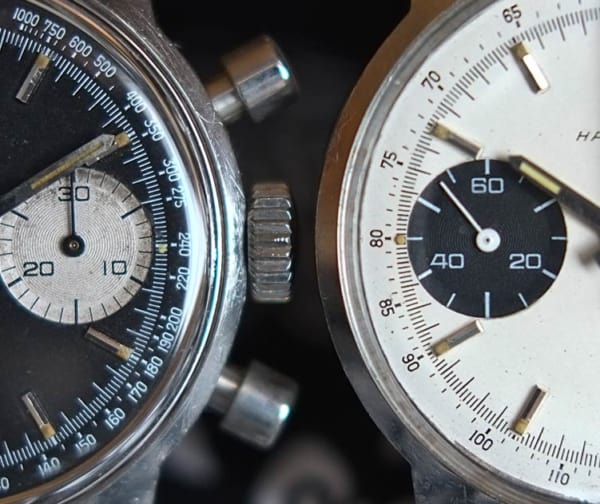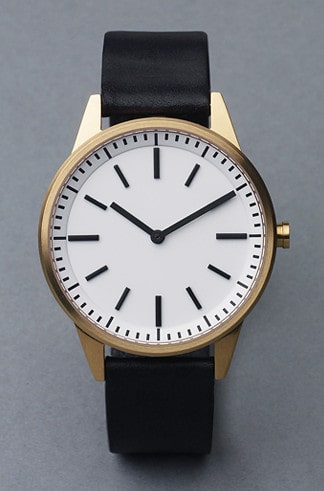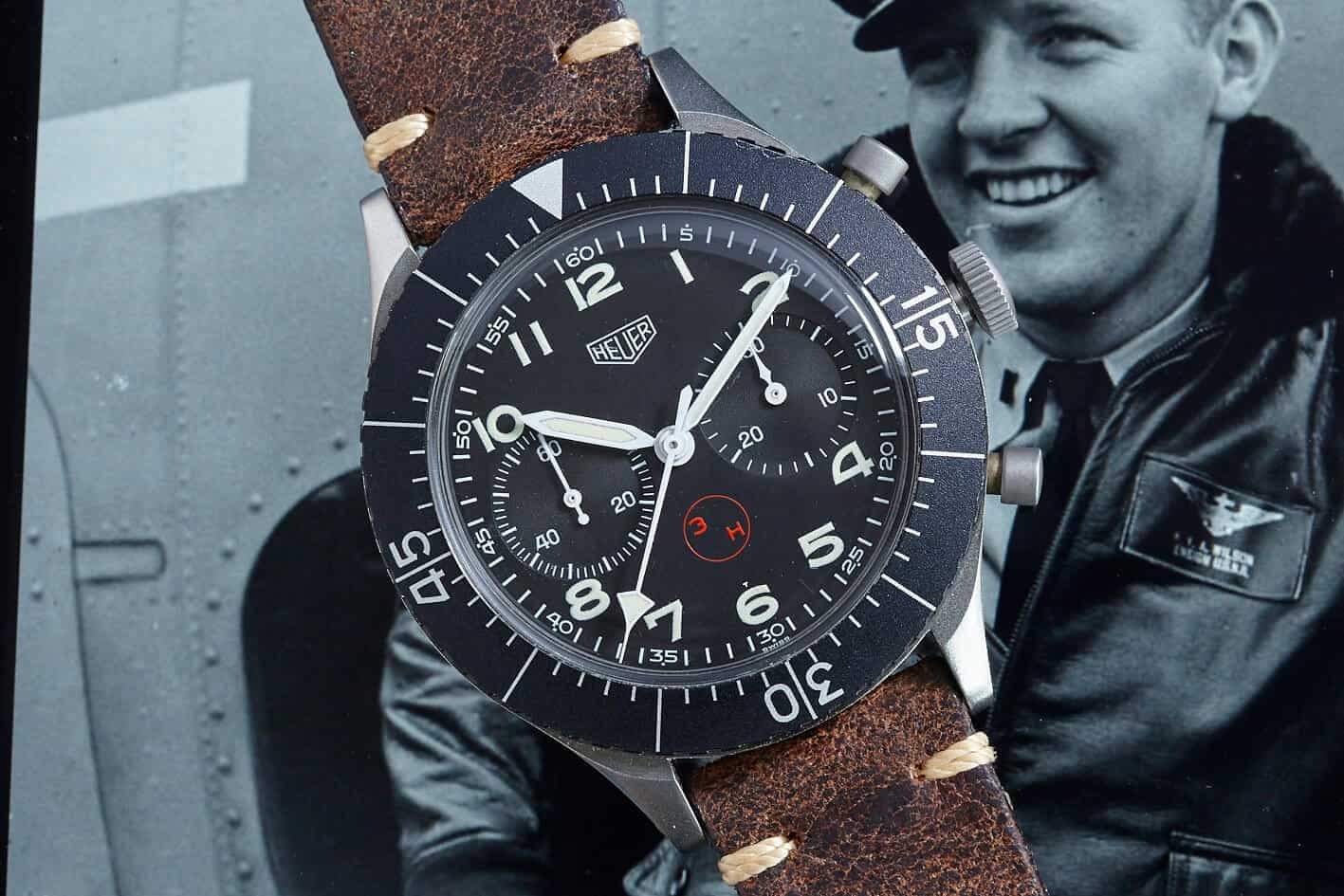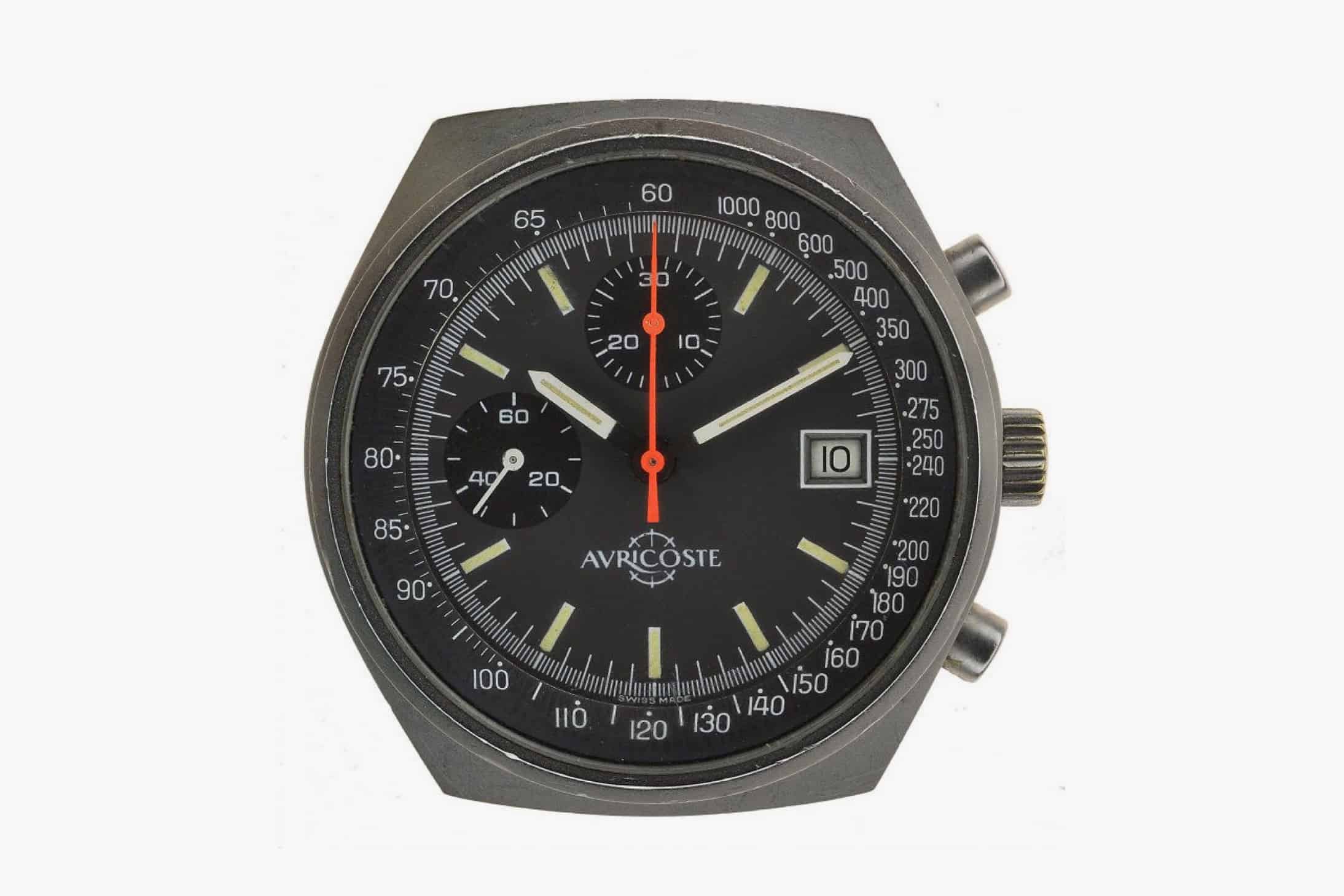1960s: Breitling Mono-Pusher
![RCAF-Breitling]() This one is sly, and that’s why I love it. It’s a Breitling that doesn’t scream Breitling. In fact, it doesn’t even say Breitling anywhere on the outside of the watch; the only hit to the watch’s maker is the script “B” on the crown. These mono-pusher chronographs were issued to Royal Canadian Air Force pilots throughout the 1960s, along with watches from Omega, Wittnauer, and Rodania. They all feature white or off-white dials, single-button chronographs, and most, like this one, are unsigned on the dial.
This one is sly, and that’s why I love it. It’s a Breitling that doesn’t scream Breitling. In fact, it doesn’t even say Breitling anywhere on the outside of the watch; the only hit to the watch’s maker is the script “B” on the crown. These mono-pusher chronographs were issued to Royal Canadian Air Force pilots throughout the 1960s, along with watches from Omega, Wittnauer, and Rodania. They all feature white or off-white dials, single-button chronographs, and most, like this one, are unsigned on the dial.
The folklore says that this lack of branding was an attempt to deter pilots from “losing” their watches when they were supposed to turn them back in. I suspect that it was done more for legibility and design simplicity than to stop sticky-fingered pilots from walking off with them. Whatever the reason for the anonymous design, these simple mono-pushers look great. You can take a deep dive into the world of RCAF chronographs with a book by renowned collector and retired RCAF pilot Darren Crabb.
1970s: Lemania Series 3 Mono-Pusher, Nuclear Submarine
![lemaniaSub]() This watch checks four cool boxes for me: white dial, mono-pusher, asymmetrical case, and specialized use. Lemania supplied chronographs to multiple branches of the British armed forces for decades, from the 1940s through the 1970s (in addition to Swedish and South African forces for the remainder of the 1970s and into the 1980s). The Series 3 is the last example of Lemania’s single-button military chronograph, after which there were small batches of two-button Lemania chronographs, followed by the cheaper Valjoux 7733 chronographs supplied by Hamilton, CWC, Precista, and Newmark. This watch has something special, though; until the majority of military chronographs–including all others we see here–this watch has no luminous material on the dial or the hands. That’s on purpose. These watches were designed for use on nuclear-powered submarines, where radioactive material leaks can be a disastrous issue.
This watch checks four cool boxes for me: white dial, mono-pusher, asymmetrical case, and specialized use. Lemania supplied chronographs to multiple branches of the British armed forces for decades, from the 1940s through the 1970s (in addition to Swedish and South African forces for the remainder of the 1970s and into the 1980s). The Series 3 is the last example of Lemania’s single-button military chronograph, after which there were small batches of two-button Lemania chronographs, followed by the cheaper Valjoux 7733 chronographs supplied by Hamilton, CWC, Precista, and Newmark. This watch has something special, though; until the majority of military chronographs–including all others we see here–this watch has no luminous material on the dial or the hands. That’s on purpose. These watches were designed for use on nuclear-powered submarines, where radioactive material leaks can be a disastrous issue.
To make sure sailors catch any leaks as soon as possible, the subs were equipped with very sensitive detectors. In fact, these detectors were so sensitive to radioactive material that the relatively small amount of luminous tritium on the hands and dial of other Royal Navy issued Lemania chronographs could cause a false positive, alerting the crew to a hazardous material leak that wasn’t actually there. To prevent that from happening, Lemania specially made these watches with solid, non-luminous black hands and black painted numerals on the dials. The dials were originally produced and stamped as standard British chronograph dials, which featured the “circle T” emblem, indicating radioactive tritium was used on the dial. In this case, however, the “circle T” has been painted over, since no luminous material was applied. This is a great example of a military chronograph designed to do a specific job in a specific place.
 Debuting in 1938, the Hanhart Calibre 40 and its descendants would become staples of German military officers’ kits from early WWII through the 1950s. These earliest examples were issued by the German Kriegsmarine (KM) and featured a single-button flyback chronograph, smooth bezel case, and luminous hands and hour numerals. This model has been reissued by Hanhart, though, unfortunately, with the later style textured bezel Hanhart is more known for.
Debuting in 1938, the Hanhart Calibre 40 and its descendants would become staples of German military officers’ kits from early WWII through the 1950s. These earliest examples were issued by the German Kriegsmarine (KM) and featured a single-button flyback chronograph, smooth bezel case, and luminous hands and hour numerals. This model has been reissued by Hanhart, though, unfortunately, with the later style textured bezel Hanhart is more known for.








 Featured Videos
Featured Videos




